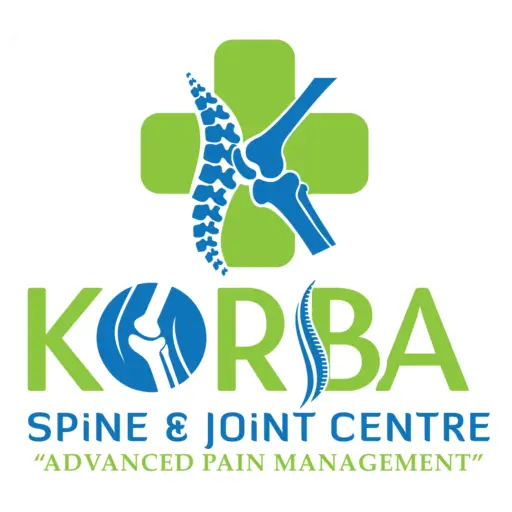Are you struggling with persistent lower back pain? Lumbar muscle strain could be the culprit! This blog will guide you through understanding this condition, its causes, symptoms, and the most effective treatment options. Let’s dive deep into why Physiotherapy is your ultimate solution for relief and prevention, and why relying solely on medications might not be enough.
What is Lumbar Muscle Strain?
Lumbar Muscle Strain occurs when the muscles and tendons supporting the lower back are overstretched or torn. This can lead to inflammation, muscle spasms, and sharp pain, making even simple movements challenging. It is a common cause of lower back pain and can range from mild discomfort to debilitating pain.
How Does Lumbar Muscle Strain Happen?
Lumbar muscle strain occurs due to:
- Sudden Movements: Lifting heavy objects improperly or twisting too quickly.
- Overuse: Repeated bending or lifting can strain the lower back muscles over time.
- Trauma: Accidents, falls, or direct blows to the lower back.
When Does Lumbar Muscle Strain Happen?
This condition can occur:
- During Physical Activities: Sports, gym exercises, or manual labor.
- After Prolonged Inactivity: Sitting for long periods or improper posture can weaken the lumbar muscles.
- Suddenly: A single wrong movement or overexertion.
Why Does Lumbar Muscle Strain Happen?
- Weak Core Muscles: Lack of strength in the abdominal and back muscles increases the risk.
- Poor Posture: Sitting or standing with improper alignment over time.
- Improper Technique: Lifting heavy objects without using your legs for support.
- Sudden Overuse: Overexertion during activities after a sedentary lifestyle.
Who is More Prone to Lumbar Muscle Strain?
Certain groups are at higher risk:
- Manual Laborers: Repeated lifting or bending.
- Athletes: Sports involving twisting or jumping.
- Sedentary Individuals: Weak muscles from prolonged sitting.
- Elderly People: Age-related loss of muscle elasticity and strength.
- Overweight Individuals: Excess weight puts strain on the lower back.
Symptoms of Lumbar Muscle Strain
- Pain Location: Lower back, usually localized.
- Nature of Pain: Sharp, stabbing pain or a dull ache.
- Associated Symptoms:
- Stiffness in the lower back.
- Difficulty standing upright or bending.
- Muscle spasms.
- Pain that worsens with movement.
Causes of Lumbar Muscle Strain
- Overexertion during physical activities.
- Improper Lifting Techniques.
- Prolonged Sitting with poor posture.
- Trauma such as accidents or falls.
- Weak or Fatigued Muscles due to lack of exercise.
Area of Pain in Lumbar Muscle Strain
The pain typically:
- Localizes to the lower back.
- May radiate slightly to the buttocks but does not extend to the legs.
How to Differentiate Lumbar Muscle Strain from Systemic Diseases like Kidney Stones
Key Differences:
| Feature | Lumbar Muscle Strain | Kidney Stone Pain |
|---|---|---|
| Location of Pain | Lower back, localized. | Starts in the back, radiates to the groin. |
| Nature of Pain | Sharp or dull ache, worsens with movement. | Cramping, wave-like pain. |
| Trigger | Physical activity, posture. | Urination, dehydration, or no specific trigger. |
| Associated Symptoms | Stiffness, spasms. | Blood in urine, nausea, vomiting. |
Treatment Options for Lumbar Muscle Strain
1. Physiotherapy: The Most Effective Solution
Why is Physiotherapy Important?
- Targets Root Cause: Addresses weak muscles, improper posture, and flexibility issues.
- Pain Relief: Techniques like TENS, ultrasound, and manual therapy reduce inflammation and muscle spasms.
- Prevention: Strengthens muscles and improves posture to avoid recurrence.
How Physiotherapy Can Help:
- Manual Therapy: Relieves pain and stiffness.
- Exercise Therapy: Improves muscle strength and flexibility.
- Postural Training: Teaches correct posture to prevent future strain.
- Education: Proper body mechanics for daily activities.
2. Medications (Temporary Relief)
- NSAIDs (e.g., ibuprofen) to reduce inflammation.
- Muscle relaxants for severe spasms.
💡 Note: Medications only suppress the pain temporarily, while Physiotherapy offers a long-term solution.
Why Visit a Physiotherapist for Lumbar Muscle Strain?
- Comprehensive Diagnosis: A physiotherapist evaluates your posture, strength, and movement to identify the cause.
- Customized Treatment: Tailored to your specific needs for optimal recovery.
- Prevention Focus: Prevents recurrence by strengthening muscles and improving body mechanics.
Precautions for Lumbar Muscle Strain
- Avoid heavy lifting without proper technique.
- Use ergonomic chairs and maintain good posture.
- Strengthen core muscles through regular exercise.
- Avoid sudden, jerky movements.
Common Myths About Lumbar Muscle Strain
- Rest is the best cure.
- Fact: Prolonged rest weakens muscles; guided movement is essential.
- You need surgery for back pain.
- Fact: Most cases of lumbar strain resolve with non-surgical treatment like physiotherapy.
- Exercise worsens back pain.
- Fact: Physiotherapist-recommended exercises aid in recovery.
Home Remedies for Lumbar Muscle Strain
- Hot or Cold Compress: Apply for 20 minutes to reduce inflammation and pain.
- Gentle Stretches: Pelvic tilts or cat-cow poses can ease stiffness.
- Massage Therapy: Relaxes tense muscles.
- Epsom Salt Bath: Soothes muscle soreness.
Why Medications Alone Are Not Enough
- Medications suppress symptoms but do not address the underlying cause.
- Without physiotherapy, weak muscles and poor posture persist, leading to recurrence of pain.
Conclusion: Treat Lumbar Muscle Strain Effectively with Physiotherapy
Lumbar muscle strain can significantly affect your daily life, but the good news is that it’s treatable. While medications provide temporary relief, Physiotherapy offers a comprehensive approach to pain management, recovery, and prevention. Take the first step toward a pain-free life by consulting a physiotherapist today.
👉 Learn More
Follow Us for More Updates:
